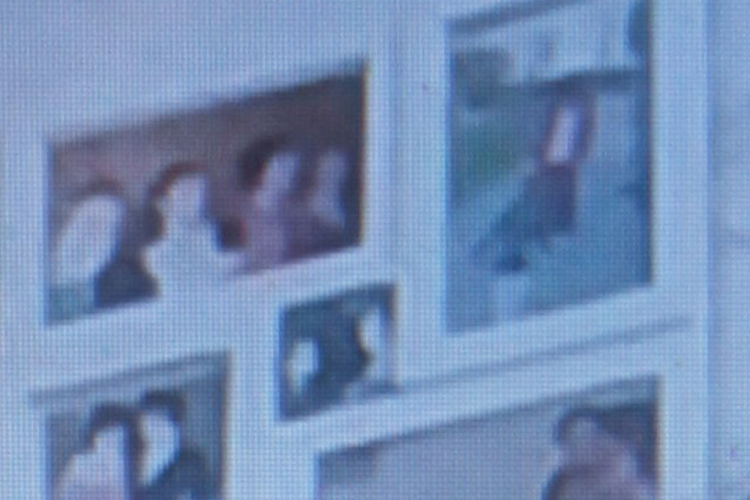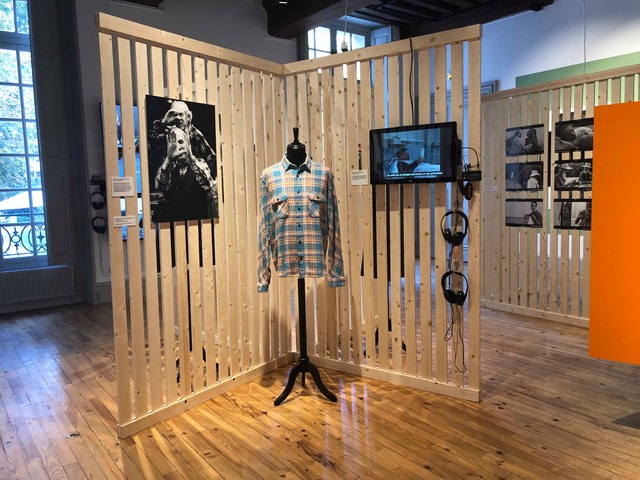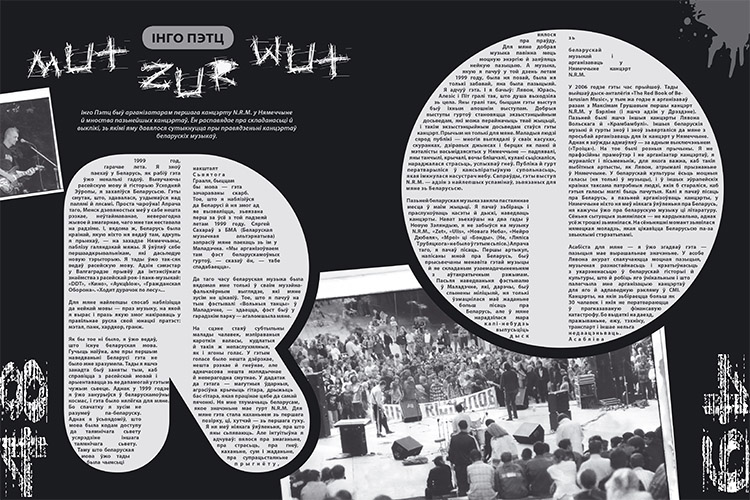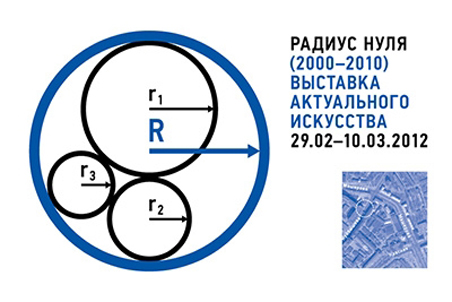
Zero Radius: Ontology of art of the 00s \ Minsk, 2012
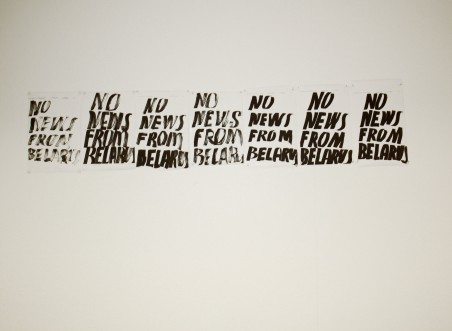
Aleksandr Komarov No News From Belarus
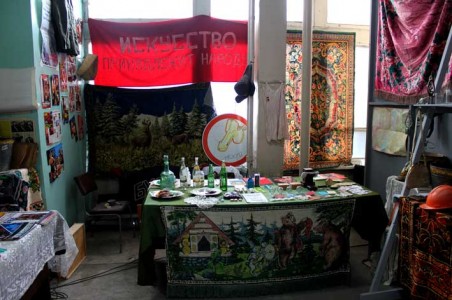
Artur Klinau A Partisan’s Boutique
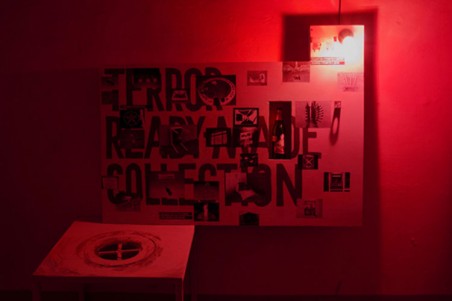
Sergey Shabohin Practice of Subordination
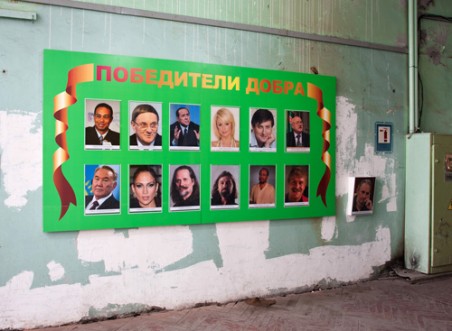
Mikhail Gulin Good’s Winners
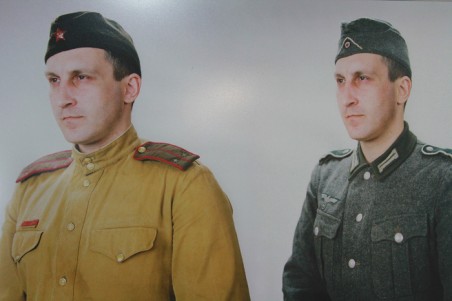
Andrei Liankevich Double Heroes

Marina Naprushkina The Anti-Propaganda Bureau
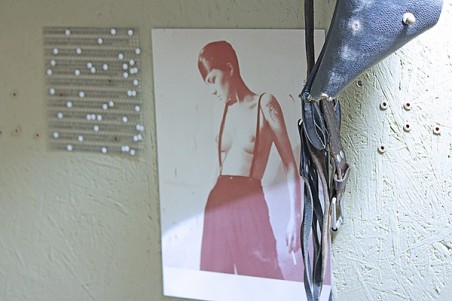
Zhanna Gladko Inciting Force project
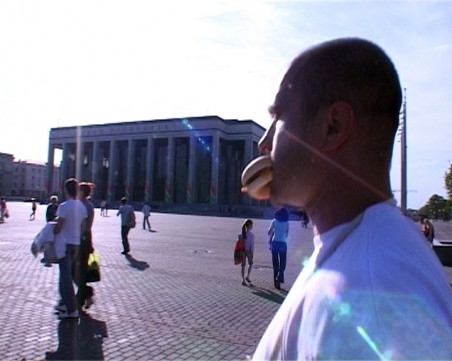
Mikhail Gulin I’m not a gay… action
pARTisan #20’2013
In 2002, in the first issue of pARTisan magazine an art critic Olga Kapenkina was speculating about the state of contemporary Belarusian art. In particular, she remarked that the Belarusian artist “doesn’t express any clear statements, he neither states nor denies anything”.
According to Olga, this was due to an empty ideological zone of Belarus, as the today’s country was the former Soviet province. Within this space artists feel themselves nomads, though at the same time, the context becomes a ground for their work. As an example, Olga brings the project “Partisan Galleries” by Igor Tishin. She also makes a reference to the article of Igor Savchenko where he addresses the topic of reflection on the context as the topic of identity that is formed in the space between “approved meanings, perceptions, and myths” which can become a metaphysical borderland of Eastern Europe in future.
From a borderland to modern times
Ten years ago, not only art critics but also philosophers viewed Belarus as a borderland. Ihar Babkoŭ was the strongest supporter of this concept. According to him, borderland is characterized by a special ethics, which allows eliminating both the position of dominance and the position of a subordinate or oppressed. The problem with this idea however was the fact that it was viewed as an opposition to the strong subject position. The Belarusians could not see themselves in this position with having such strong friends as Russia and Western Europe around.
It was easy to announce that this position had to be overcome, but it was difficult to actually do this. Therefore, in the first decade of the 21st century a new concept crucial for the art processes in Belarus is gaining popularity namely, the concept of modernity.
Modernity, as Michel Foucault wrote in the 80-ies of the 20th century, must be understood not as a historical era, but as a statement. A crucial point for modernity is that it “immediately denotes our engagement with a current moment, and appears as a certain task”. The task of the modernist art, which was established in the second half of the 19th century as a new paradigm of culture in general, was to redefine the rules for the organization of a work and its functioning in the society. The contemporary art as a particular way of relating to the reality or an increased sensitivity has transformed itself into an open discursive space continuously forming between objects, people, and, most importantly, between the artist and the audience.
In this sense, the modernity as well as the borderland destroys the relations of domination and subordination, although not denying the subjectivity. Subjectivity, in its turn, becomes a feeling of sensitivity to what is happening now. The one who possesses such sensitivity then easily transforms the periphery into the center (and vice versa), as they are speaking the same language with their contemporaries scattered across the world. The nomads are becoming members of an open community whose essence, according to modern philosophers, is disagreement or disharmony, which paradoxically allows them to be together.
Thus, those who disagree with the rules dominating in the society and culture, whether these are economic, political, or symbolic rules, and those who are willing to take responsibility for setting new rules, get together. No community can exist without new rules.
How much are the Belarusian artists able to enter into such a community of disharmony?
The new generation of modern Belarusian art
In recent 00s, a new generation of contemporary Belarusian artists has come on stage. Some of them, for example, Marina Naprushkina, live in Berlin. Others, like Sergey Shabohin, Zhanna Gladko, Mikhail Gulin and Antanina Słabodćykava are cooperating with Minsk Contemporary Art Gallery Ŭ. Andrei Liankevich, for example, is easily moving across the international stage and inspires numerous fans with his mobility (Lankiević can easily collect an audience of 150 people at his performance in Minsk).
These artists are only in their early 30ies, but they have already presented themselves in individual and group projects in Belarus and abroad. In the new decade of the 21st century, their works were included into several publications, namely, Zero Radius: Ontology of art of the 00s (ed. by O. Jguirovskia, O. Shparaga, and R. Vashkievich) and Multimedia Encyclopedia of contemporary Belarusian art “Suchart” (a joint project of 34mag.net and ArtAktivist.org).
The new generation of Belarusian artists work in different styles and with different media. However, they are distinguished by a not trivial understanding of the notion “the political,” which has become personal for them. This new trend which has previously been a feature of the works of individual Belarusian artists, now unites the whole generation. According to the artists, every time they create their projects, they have to overcome something inside themselves, in particular, to deal with the collective phobias, stereotypes and habits that assign character to the Belarusian reality.
Or, better say, create an illusion of stability and permanence.
This concerns not only the fear of public space and the microphysics of power (S. Shabohin and Zh. Gladko), the fear to become “another” (M. Gulin), for example, a gay, or a feeling of an absolute determination of social roles, such as women and mothers (A. Słabodćykava, and Zh. Gladko). It also concerns the construction of the past or the memory (A. Liankevich). It could also be noted that these artists have teachers who they often perform with at group exhibitions. These are, first of all, Ales Puśkin and Aleksey Lunev, Aleksandr Komarov and Lena Davidovich, Andrei Dureika and Maksim Tyminko. In their work, you can also find references to the authors who have already become masters of the Belarusian art, such as Ludmiła Rusava, Serhey Kiryuschenko, Igor Tishin, and others.
The first in a series of major exhibitions which gave an opportunity to a number of representatives of the new generation to present themselves to the general public outside Belarus, was the exhibition Opening the Door? Belarusian art today (curator Keystutis Kuyzinas) which was held in late 2010 at the Center for Contemporary Art in Vilnius. Six months later it moved to the gallery “Zahenta” in Warsaw. A remarkable thing about this exhibition was that half of its participants were Belarusian artists who lived outside Belarus.
Its symbol published on the cover of the catalog by the artist Juri Shust was “diamond” of the new National Library in Minsk turned into a globe. In such a way, Belarusian official symbols underwent an art appropriation. Its expanded version made by Juri Shust was displayed at the Museum of Contemporary Art in Leipzig in January-February 2012 within an international art project Scenarios for Europe (the curator from the Belarusian side was Lena Prenc).
This new form of work with the Belarusian reality was embodied at the collective exhibition Zero Radius held in Minsk at Haryzont plant in March 2012 (the curators were R. Vashkievich, O. Jguirovskia and me). The idea of the exhibition was to sum up the first decade of the 21st century of modern Belarusian art. The viewers had a chance to observe an ironic attitude to the modern times of 90ies presented by A Partisan’s Boutique by Artur Klinau. After this, the visitors could go on to more serious, but at the same time very personal art statements about women’s and about everyday life (M. Naprushkina, I. Solomatina, M. Gulin). Also, the viewer could see metamorphosis of the urban space (works by V. Tsesler, S. Zhdanovich, A. Rybchinski, and A. Ivanov), the reminders of the Second World War (A. Liankevich) and a whole set of social experiences: from touching the hands of another (I. Savchenko) to quite realistic sensations of their own artistic experience (“Revision” art-group), as well as touching the material of the political (S. Shabohin).
These new feelings for the Belarusian contemporary art could also be observed in the gallery EFA Project Space in New York in 2012 at the exhibition organized by Olga Kapenkina Sounds of silence: the art of the period of the dictatorship. Several other young Belarusian artists, such as Jaŭhen Śadko were presented at this exhibition. His paintings are joined by several storylines, namely, faceless and total character of the Belarusian political reality most sharply experienced in the main square of Minsk – Kastryćnickaja Square. This is an unsafe meeting place for all for whom the political issue has become a dimension of life which cannot be left away.
It is at this square that Mikhail Gulin was detained in October 2012. He tried to construct his personal portable monument out of colored cubes within the frameworks of the international project Going public. The difficulty of public expression initiated by Lena Prenc and already implemented in several countries, except Belarus, even in Germany, Lithuania and Russia. As a result, the artist was brought to court.
However, the new trends of contemporary Belarusian art of the last decade are not the detentions, as they had happened in the past as well, for example, to Ales Puśkin. The trend is the very participation of Belarusian artists in transnational projects, implemented successively in several countries, so that their artistic expression in the international stage could also be heard in Belarus (another transnational project Europe (to the power of) n was realized in Y gallery in September 2012).
***
Coming back to the assessment of the modern Belarusian art given by Olga Kapenkina ten years ago, it can be concluded that the Belarusian artist on the international stage is trying to find adequate means to express their specific experience. For an outside observer, this experience has one name – Lukashenko. For the new generation of artists Belarusian reality is not equal to Łukaśenka, though it surely relates to him to some extent.
Consciously or not, but they think that their task is to express, to show and tell that the reality of their most intense and even private lives is hiding behind this name. One can’t hide or escape from this reality.
This reality, however, is not something that is clear and taken for granted, namely, nation, culture, and language. This is the reality which is built up in the course of routine individual and group practices, and the task of contemporary art is to make it visible.
Olga Shparaga. Translated by Sviaiłana Sous
Opinions of authors do not always reflect the views of pARTisan. If you note any errors, please contact us right away.




